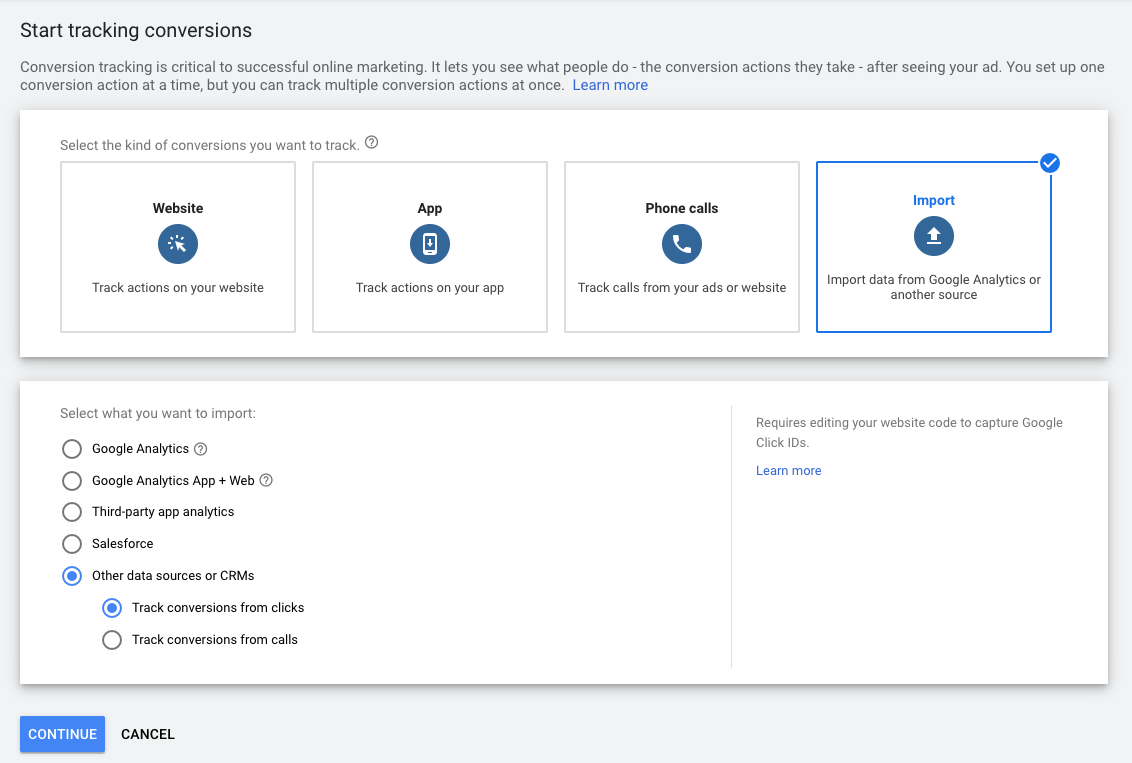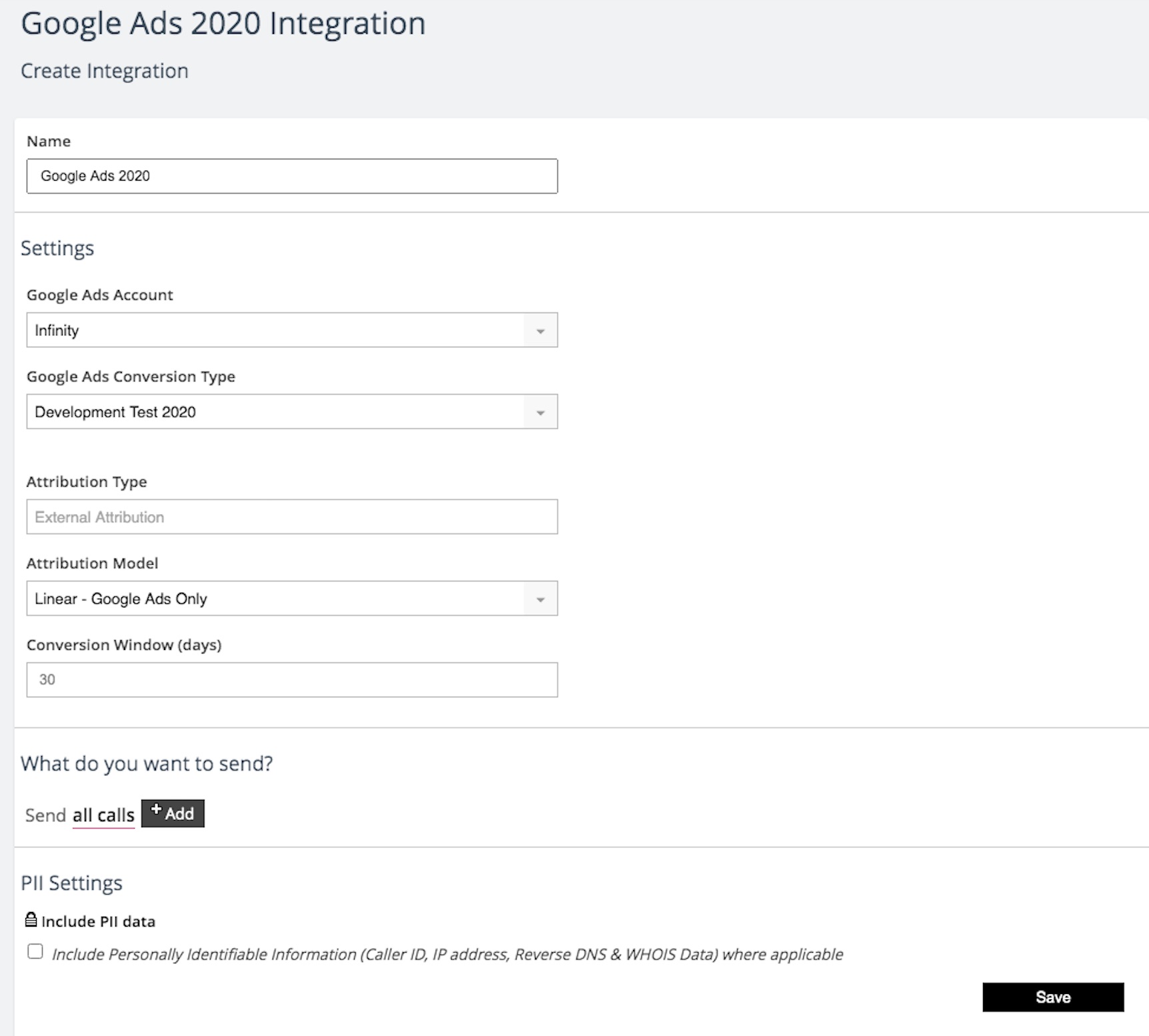Google Ads is one of the world's leading online advertising platforms.
Infinity’s integration with Google Ads lets you understand the offline conversions driven by your Google Ads activity, get a more complete picture of the impact of your paid search activity, automatically send them into ads after each conversion, where you can view them in the context of other campaign results and assign credit to each ads activity involved in a conversion.
When an end user who has clicked on an Google Ads advert completes a conversion activity, we will pass that offline conversion event into Google Ads.
You can then link offline conversion events back to the Google Ads activity that helped drive that conversion event, and get a full picture of the Ads activity’s impact.
Setting up your Google Ads integration is a simple process with just two steps:
- Create the conversion event in Google Ads
- Configure the Integration in Infinity
The first step is to create your conversion event in Google Ads
Step 1 - Create the conversion action in Google Ads
The starting point for the integration is to create a conversion action for offline conversions in Google Ads
- Navigate to ad.google.com, login to your account and select Tools and Settings from the top of the screen.
- Then select Conversions from the Measurement menu, highlighted in green in the image below.

- Click the blue + button to create a new conversion action, the select Import, then Other data sources or CRMs and then choose Track conversions from clicks, as shown below. Click the button button to Continue.

You will then need to complete the form shown below. Start by giving your conversion action a name, choose a value setting and choose from one of the two count options.
Within the value section, you assign a value to each conversion, to help you measure the impact of your advertising.
There’s three options; using the same value for each, different values for each or don’t send a value at all.
If you’re going to push values in from Infinity using either goal value or transaction value, then you need to use the second option - Use different values for each conversion.
Determine your click-through conversion window choosing the dropdown.
Include in conversions is select by default, you need to keep this enabled in order to see the conversions in you reporting.
Finally you have the Attribution model selection. You can choose between Google's native search attribution with its various models or use External Attribution.
This allows Infinity to provide attribution credits for ads click that happen in the conversion window prior to the offline conversion event in question. The attribution setting cannot be edited once it is selected.
Make your choices and click the blue Create and Continue button





